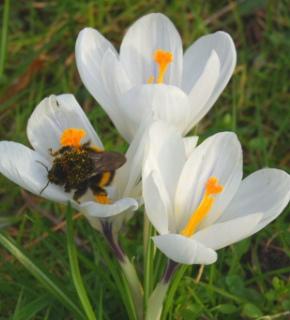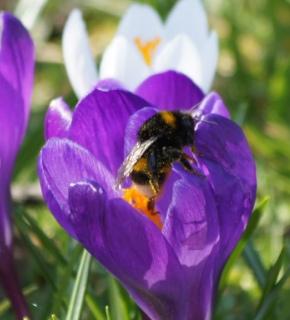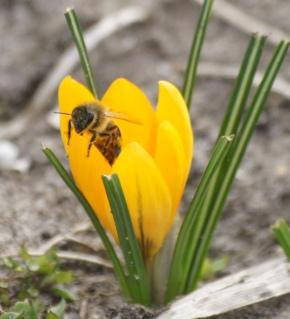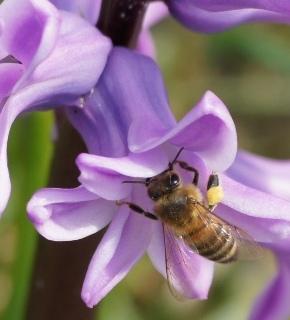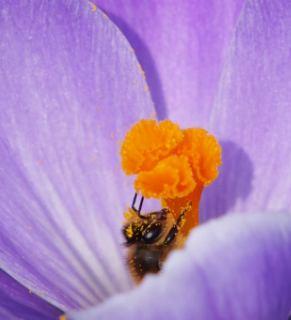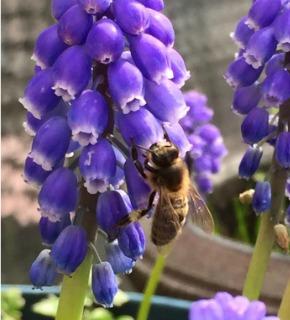We can’t survive without the bee and the bumble bee. Because these little creatures pollinate our food. Their population has diminished, so it’s necessary to provide pollen and nectar by planting spring flowers in your garden or on your balcony.
When bees and bumblebees awake from their hibernation, they need to consume plenty of pollen and nectar to get ready for the season. The only place they can find this is in early spring blooming bulbs. When you plant these bulbs in the autumn, before winter kicks in (September until November), the next spring you and the bees will get to enjoy bright and joyful flowers.
Plant the bulbs in the ground at a depth of twice their height and make sure the tip is facing upward. Alternatively, you can dig a larger patch and freely spread the bulbs out and cover them with soil.
Early spring, bees and bumble bees can collect plenty of pollen and nectar from plants like the crocus, blue grape hyacinths, glories of the snow, star hyacinths and wild tulips. Since not much else grows in early spring, and perennials and annuals aren’t around yet, your early spring bulbs provide the first buffet of the new year. Mid spring you can continue with hyacinths, tulips, camassia and allium (April to June). Note: you can plant spring bulbs intermixed with perennials, because spring bulbs flower before the perennials do.
Of course, we shouldn’t forget our little pollinating friends in the summertime either. We can offer them a rich buffet by planting summer blooming bulbs that produce an abundance of pollen, like single flowering dahlias, lilies, oxalis, gladioli and liatris (blazing stars). These bulbs combine well amongst themselves, but are great when mixed with perennials as well. These summer blooming bulbs are planted outdoors in the late spring after there is no more frost during the nighttime. Some of them will flower deep into October. This truly is a party, let me tell you!
